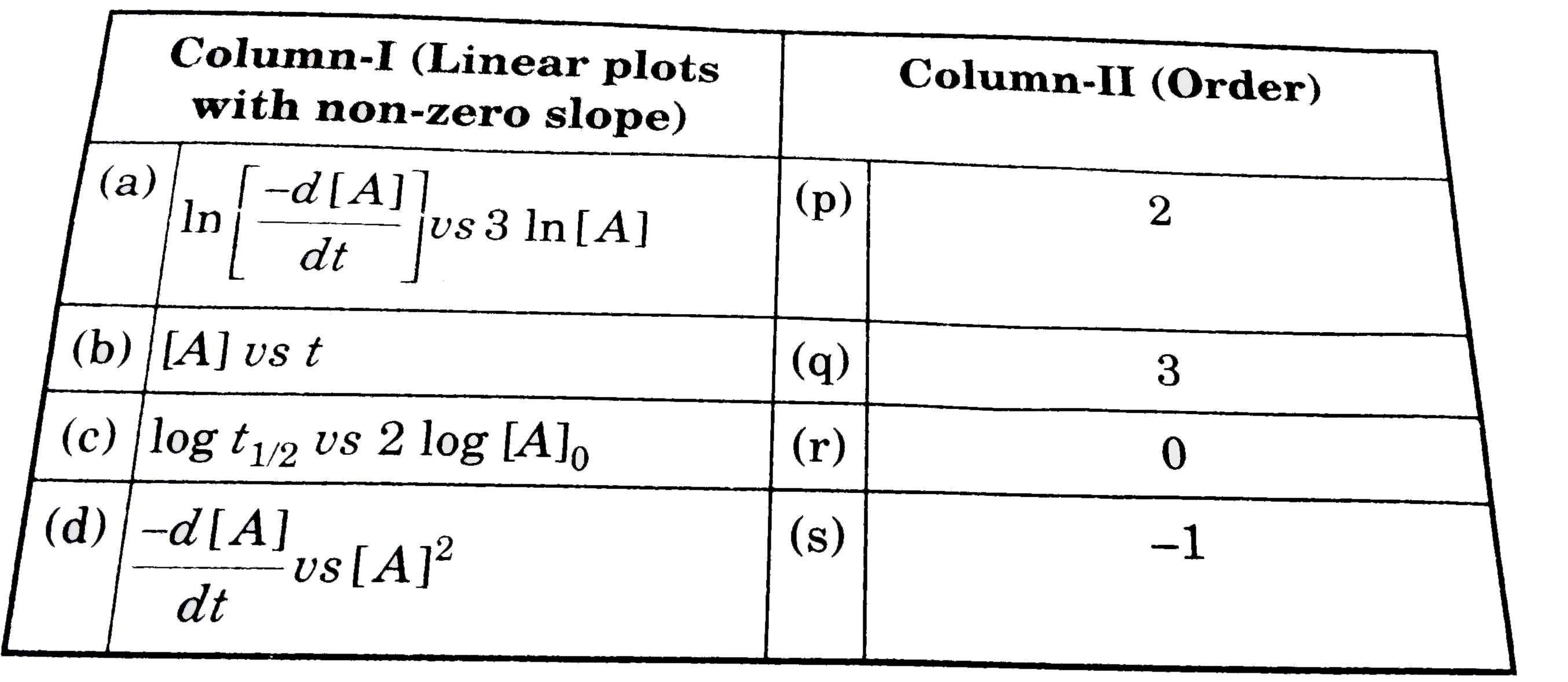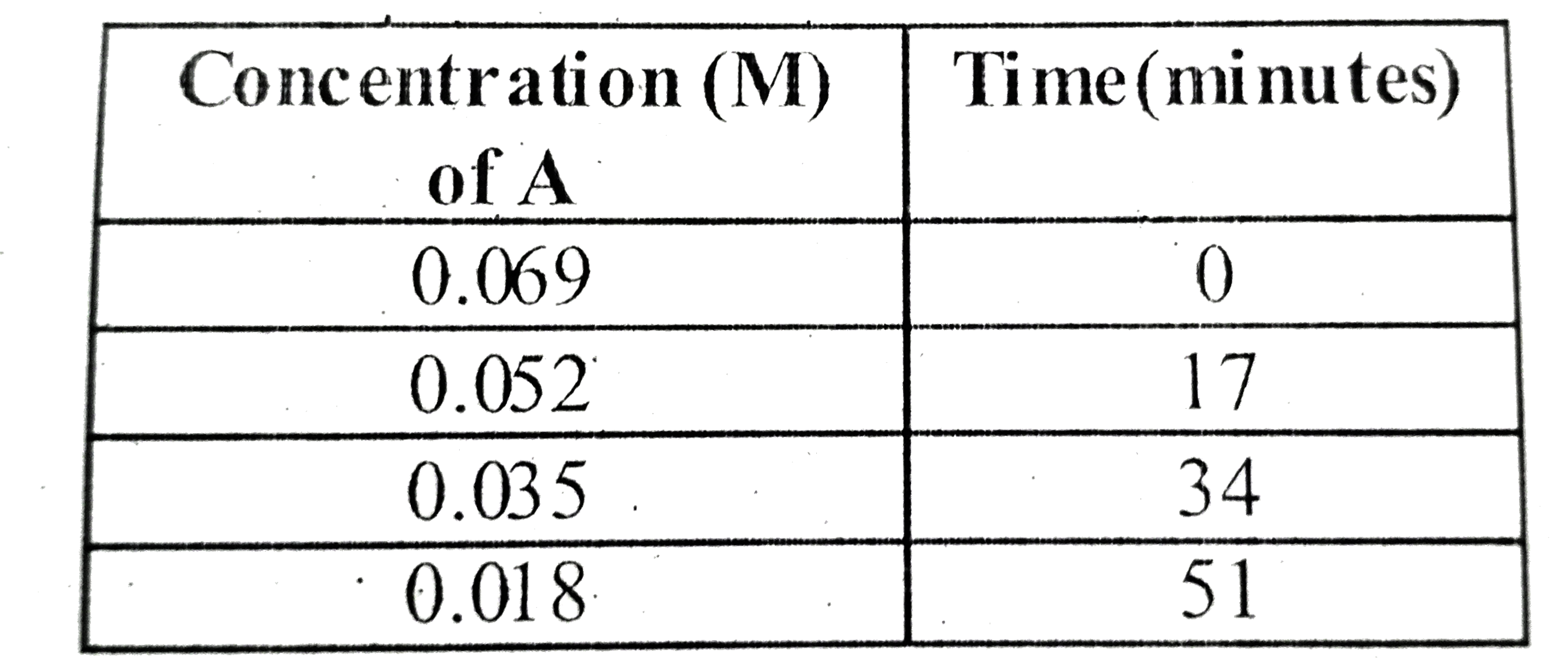Co =initial concentration of the reactant Ct = concentration of the reactant at time t, k=rate constant of the reaction. Then the equation applicable for a first order reaction is
Ct=Coe−kt
Ct=Coekt
Co=Cte−kt
(C0Ct)=1
The correct Answer is:A
To derive the equation applicable for a first-order reaction using the given terms, we can follow these steps:
1. Understanding the Terms:
- Let C0 be the initial concentration of the reactant.
- Let Ct be the concentration of the reactant at time t.
- Let k be the rate constant of the reaction.
2. Using the Integrated Rate Law for First-Order Reactions:
- The integrated rate law for a first-order reaction is given by the equation:
Ct=C0e−kt
- This equation states that the concentration of the reactant at time t is equal to the initial concentration multiplied by the exponential of the negative rate constant times time.
3. Rearranging the Equation:
- To derive this equation, we can start from the definition of a first-order reaction, which can be expressed in terms of the natural logarithm:
ln(CtC0)=−kt
- By exponentiating both sides, we can eliminate the logarithm:
CtC0=e−kt
- Multiplying both sides by C0 gives us:
Ct=C0e−kt
4. Final Equation:
- Thus, the equation applicable for a first-order reaction is:
Ct=C0e−kt
- Let C0 be the initial concentration of the reactant.
- Let Ct be the concentration of the reactant at time t.
- Let k be the rate constant of the reaction.
- The integrated rate law for a first-order reaction is given by the equation:
Ct=C0e−kt
- This equation states that the concentration of the reactant at time t is equal to the initial concentration multiplied by the exponential of the negative rate constant times time.
- To derive this equation, we can start from the definition of a first-order reaction, which can be expressed in terms of the natural logarithm:
ln(CtC0)=−kt
- By exponentiating both sides, we can eliminate the logarithm:
CtC0=e−kt
- Multiplying both sides by C0 gives us:
Ct=C0e−kt
- Thus, the equation applicable for a first-order reaction is:
Ct=C0e−kt
Topper's Solved these Questions
- CHEMICAL KINETICS Book:NARAYNAChapter:CHEMICAL KINETICS Exercise:EXERCISE -1 (C.W) (RATE OF REACTION & FACTORS)
Explore 14 Videos
- CHEMICAL KINETICS Book:NARAYNAChapter:CHEMICAL KINETICS Exercise:EXERCISE -1 (C.W) (ORDER OF REACTION)
Explore 14 Videos
- CHEMICAL KINETICS Book:NARAYNAChapter:CHEMICAL KINETICS Exercise:CHECK YOUR GRASP
Explore 14 Videos
- CARBOXYLIC ACIDBook:NARAYNAChapter:CARBOXYLIC ACIDExercise:All Questions
Explore 288 Videos
- CHEMISTRY IN EVERYDAY LIFEBook:NARAYNAChapter:CHEMISTRY IN EVERYDAY LIFEExercise:ASSERTION & REASON TYPE QUESTIONS
Explore 10 Videos
Similar Questions
Knowledge Check
For a first order reaction, the concentration of reactant :
Ais independent of timeBvaries linearly with timeCvaries exponentially with timeDNoneIf the concentration of the reactants is increased, the rate of reaction for first order-
ARemains unaffectedBIncreasesCDecreasesDMay increase or decreaseIn a first order reaction with time the concentration of the reactant decreases
AlinearlyBexponentiallyCno changeDNone of these
Which is constant for different reactant concentrations in a first-order reaction?
View SolutionFor a zero-order reaction, with the initial reactant concentration a, the time for completion of the reaction is
View SolutionIf 'a' is the initial concentration of the reactant, the time taken for completion of the reaction, if it is of zero order, will be
View SolutionIn a first order reaction fraction of the total concentration of the reactant varies with time 't' is equal to
View SolutionIf doubting the initial concentrations of a reactant doubles t12 of the reaction , the order of the reaction is
View Solution


